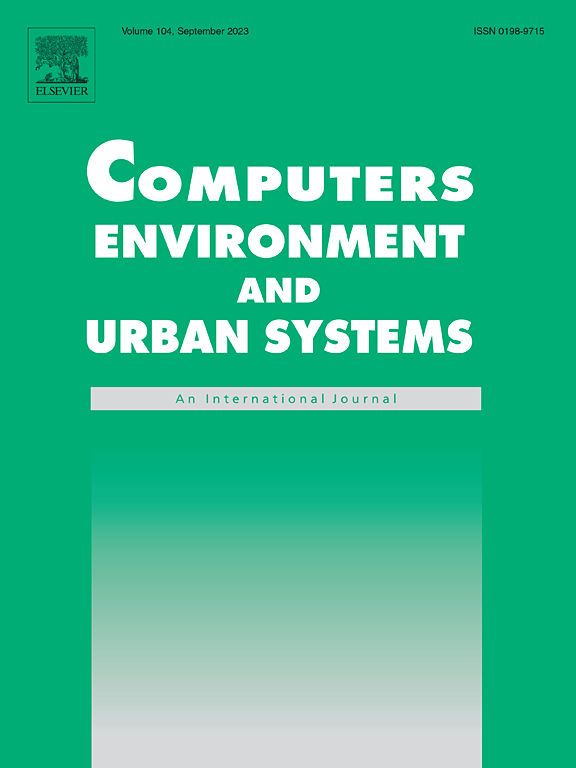Analysing local spatial density of human activity with quick density clustering (QDC) algorithm
IF 7.1
1区 地球科学
Q1 ENVIRONMENTAL STUDIES
Computers Environment and Urban Systems
Pub Date : 2025-04-10
DOI:10.1016/j.compenvurbsys.2025.102289
引用次数: 0
Abstract
This paper deals with the local spatial density of human activity. By understanding and quantifying the spatial distribution of interrelated phenomena such as business location and population settlement at the micro level, it is possible to track local under- and over- spatial representation in socio-economic development. The modelling of spatial density using point data is crucial for territorially targeted policies and business decisions. Weak stream of studies in this field is a consequence of lack of methods. This study presents quick density clustering (QDC), a novel algorithm for classifying geolocated point data into low, medium and high density clusters. QDC uses two spatial features - the sum of distances to k-nearest neighbours (kNN) and the number of neighbours within a fixed radius (frNN) - to generate parameter robust, interpretable clusters. By normalising these metrics and applying K-means clustering, QDC captures both local and global density variations, making it suitable for analysing human activity at urban and regional scales. Empirical validation demonstrates its accuracy and effectiveness in partitioning point data into density clusters and comparing density groups in grids. The QDC provides a robust framework for advancing density-based studies in socio-economic research as well as environmental science and spatial statistics
基于快速密度聚类算法的局部人类活动空间密度分析
本文研究人类活动的局部空间密度。通过在微观层面上理解和量化商业地点和人口定居等相关现象的空间分布,就有可能跟踪地方社会经济发展中的空间代表性和空间代表性。使用点数据的空间密度建模对于有地域针对性的政策和商业决策至关重要。这一领域研究的薄弱是缺乏方法的结果。本文提出了一种快速密度聚类(QDC)算法,用于将定位点数据分为低、中、高密度聚类。QDC使用两个空间特征——到k个最近邻的距离之和(kNN)和固定半径内的邻居数量(frNN)——来生成参数鲁棒的、可解释的聚类。通过规范化这些指标并应用K-means聚类,QDC捕获了局部和全球密度变化,使其适用于分析城市和区域尺度上的人类活动。实验验证了该方法对点数据进行密度聚类划分和网格密度组比较的准确性和有效性。QDC为推进社会经济研究、环境科学和空间统计方面的基于密度的研究提供了一个强有力的框架
本文章由计算机程序翻译,如有差异,请以英文原文为准。
求助全文
约1分钟内获得全文
求助全文
来源期刊

Computers Environment and Urban Systems
Multiple-
CiteScore
13.30
自引率
7.40%
发文量
111
审稿时长
32 days
期刊介绍:
Computers, Environment and Urban Systemsis an interdisciplinary journal publishing cutting-edge and innovative computer-based research on environmental and urban systems, that privileges the geospatial perspective. The journal welcomes original high quality scholarship of a theoretical, applied or technological nature, and provides a stimulating presentation of perspectives, research developments, overviews of important new technologies and uses of major computational, information-based, and visualization innovations. Applied and theoretical contributions demonstrate the scope of computer-based analysis fostering a better understanding of environmental and urban systems, their spatial scope and their dynamics.
 求助内容:
求助内容: 应助结果提醒方式:
应助结果提醒方式:


